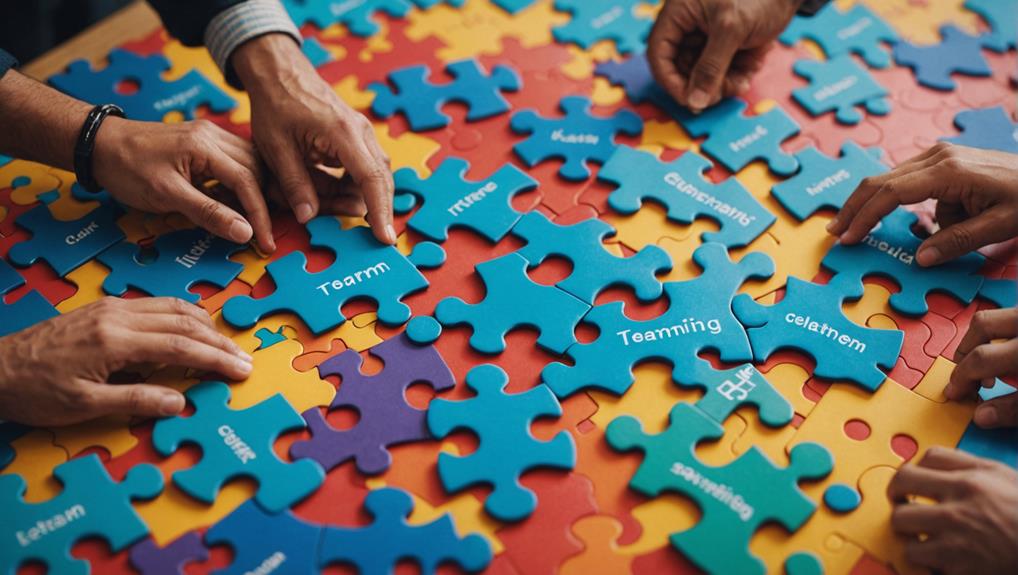Strategies for Assessing Organizational Culture Alignment in Mergers and Acquisitions

Assessing organizational culture alignment in mergers and acquisitions involves analyzing core values, leadership styles, and communication practices. By conducting comprehensive cultural due diligence, including employee surveys and interviews, a detailed understanding of potential conflicts and synergies can be gained. Evaluating shared values and organizational narratives is crucial for identifying key areas for integration.
Leadership commitment plays a vital role in establishing the right tone, promoting transparency, and addressing concerns proactively. Implementing changes through strategic workshops and maintaining ongoing dialogue are essential for ensuring a seamless transition. Understanding and planning for these elements are fundamental to the success of mergers and acquisitions, contributing to a harmonious blending of organizational cultures.
Exploring strategies to optimize cultural alignment in mergers and acquisitions can lead to more effective integration processes. By prioritizing cultural compatibility and aligning core values, organizations can create a strong foundation for post-merger success.
Key Takeaways
- Employee surveys and interviews can provide valuable insights into the cultural values and operational practices of the merging organizations.
- By analyzing the core values and beliefs of each organization, we can identify potential synergies and conflicts that may arise during the merger.
- Understanding the leadership styles and decision-making processes of the merging organizations can help us anticipate integration challenges and alignment opportunities.
- Assessing communication practices within each organization is crucial for understanding information flow and resolving conflicts effectively.
- On-site visits offer a firsthand look into the day-to-day operations of the organizations, allowing us to gather direct insights into their unique organizational cultures.
Understanding Organizational Culture
Understanding organizational culture involves delving into the fundamental values, beliefs, and behaviors that shape a company. These elements offer valuable insights into how leadership styles, communication practices, and decision-making processes influence the overall work environment.
Effective leaders play a crucial role in setting the tone for the organizational culture. They can either nurture an environment that fosters innovation and collaboration or inadvertently stifle creativity and create resistance among employees.
Communication stands as a cornerstone in upholding a cohesive organizational culture. Transparent and open channels of communication build trust and alignment within the workforce, while poor communication can result in misunderstandings and fragmentation.
When evaluating decision-making processes, it's essential to determine whether they're inclusive and adaptable, enabling quick responses to changes, or if they're rigid and hierarchical, hindering progress.
Employee resistance often arises from a lack of cultural alignment within the organization. When employees feel disconnected from the core values of the company or hold differing views on leadership styles and practices, it can negatively impact their engagement and productivity.
Understanding and addressing these cultural dynamics are crucial for organizations seeking to navigate challenges effectively and leverage their existing culture for driving innovation and success, especially in the context of mergers and acquisitions.
In the realm of mergers and acquisitions, aligning organizational cultures is paramount for ensuring a smooth integration process. Merging companies with divergent cultures can lead to conflicts, decreased morale, and hindered productivity if not managed effectively.
Importance of Cultural Alignment
Cultural alignment plays a critical role in mergers and acquisitions, impacting employee morale, productivity, and the overall success of integration. It's vital to align the cultures of organizations coming together during mergers and acquisitions. Failure to do so can result in challenges like employee pushback, loss of talent, and a decline in shareholder value.
Research from PwC demonstrates a significant link between cultural alignment and the success of M&A deals. By focusing on bridging cultural differences through a shared vision, purpose, and values, companies can establish a solid foundation for a cohesive post-merger entity. This shared framework is crucial for driving organizational advancement and performance, ensuring that all stakeholders are aligned and working towards common objectives.
In the pursuit of innovation, strategic cultural alignment becomes a pivotal factor in achieving M&A triumph. It goes beyond combining financials and operations; it involves creating an inclusive environment where employees from both entities feel appreciated and driven. This alignment nurtures a collaborative culture that enhances productivity and morale, facilitating a smoother integration process.
Ultimately, cultural alignment stands as a decisive element that can either make or break the success of mergers and acquisitions.
Conducting Cultural Due Diligence

As we embark on the cultural due diligence process, assessing core values and examining leadership styles stands as critical steps. Utilizing employee surveys, interviews, and on-site visits will provide us with a comprehensive understanding of these elements.
This method ensures the early detection of potential cultural clashes, paving the way for a more seamless integration process.
Evaluate Core Values
When assessing core values in cultural due diligence, we can identify possible clashes that may affect the integration after a merger. By thoroughly examining the core values, beliefs, and practices of the organizations involved, we can gain a better understanding of their organizational culture and assess their compatibility. This step is crucial in pinpointing any areas of misalignment that could pose risks to the success of the merger.
In cultural due diligence, we not only identify core values but also analyze how these values are reflected in the day-to-day operations of the organizations. This in-depth analysis helps us predict how shared or divergent values might impact collaboration, decision-making, and overall organizational cohesion.
For example, if one company prioritizes innovation while the other leans towards risk aversion, this disparity could lead to friction and hinder a smooth integration process.
Leadership Style Analysis
Understanding leadership styles plays a crucial role in conducting cultural due diligence for mergers and acquisitions. By examining how leaders shape organizational culture, we can uncover potential clashes and areas for alignment. Different leadership styles have a direct impact on the success of post-merger integration and the morale of employees, underscoring the importance of this analysis in developing effective integration strategies.
When evaluating leadership styles, we delve into not just decision-making processes but also how leaders convey their vision and values. This deep dive helps us grasp the existing organizational culture and anticipate its evolution. By identifying these subtleties, we can devise targeted integration strategies that nurture cultural harmony.
Additionally, analyzing leadership styles acts as a roadmap for cultural integration, allowing us to pinpoint potential areas of conflict and synergy. This proactive approach enables us to tackle challenges and leverage strengths, ensuring that cultural alignment is a fundamental aspect of the M&A journey, not an afterthought.
Ultimately, comprehending leadership styles equips us with actionable insights to craft a cohesive organizational culture that not only weathers the merger but also flourishes, driving the combined entity towards innovation and sustained success.
Evaluating Shared Values
When assessing shared values, it's crucial to delve into core values and conduct a thorough analysis of cultural compatibility. Understanding the key beliefs that drive each organization helps in determining whether our values are in sync and in identifying potential areas of disagreement.
This alignment plays a vital role in ensuring a seamless integration and in cultivating a cohesive organizational culture following the merger.
Core Value Analysis
Understanding the core values of the organizations involved is essential in mergers. This analysis helps assess the cultural alignment between the merging entities. By identifying shared values, we can gauge the potential for a cohesive post-merger culture. These shared values serve as the building blocks for organizational compatibility and successful integration.
The core value analysis delves into the fundamental beliefs that drive each organization, highlighting any potential cultural differences that may arise. For instance, if one company prioritizes innovation while the other values tradition, recognizing and addressing these differences early on is crucial for a smooth merger process.
Identifying and aligning core values is a key step in ensuring a successful merger, as it sets the foundation for a harmonious organizational culture post-merger. By acknowledging and managing any cultural disparities, organizations can navigate the integration process more effectively and build a strong, unified entity.
Cultural Compatibility Assessment
Assessing cultural compatibility through shared values is crucial for the success of a merger. When organizations come together, understanding how well their values align is key. This alignment helps in integrating both entities smoothly, creating a united and innovative workplace.
To conduct a cultural compatibility assessment effectively, we need to gather insights through employee surveys and interviews. These tools provide valuable data on the shared values within each organization. Analyzing this information helps us identify areas of cultural synergy and potential conflict.
Shared values form the foundation of a successful merger, reducing cultural clashes that can occur when two distinct organizational cultures merge. Identifying these shared values early on creates a roadmap for cultural alignment, ensuring both companies can move forward harmoniously.
A comprehensive assessment of shared values is essential for understanding how well the merging organizations' cultures will blend. This sets the stage for a successful integration, minimizing risks and leveraging cultural strengths to drive innovation and growth post-merger.
Analyzing Organizational Narratives

Understanding organizational narratives plays a crucial role in reducing employee stress and ensuring alignment during a merger. Analyzing these narratives involves delving into the shared story that both organizations narrate about the merger. This narrative isn't just a facade; it's essential for harmonizing the cultures of the merging entities.
By establishing a clear purpose through a unified narrative, we can assist employees in comprehending the rationale behind the merger, thereby alleviating anxiety and cultivating a sense of cultural unity.
Effective communication is paramount in this context. By clearly articulating the significance of the merger, we foster employee engagement and cultivate a supportive atmosphere post-merger. A well-crafted narrative unites everyone around a shared vision, streamlining the integration process.
This is especially critical in mitigating cultural clashes that have the potential to derail meticulously planned mergers.
Assessing Company Norms
To assess company norms effectively, we must evaluate communication styles, understand decision-making processes, and examine work environment dynamics.
By comparing these aspects in both organizations, we can identify potential areas of conflict and opportunities for alignment.
This thorough examination ensures proactive management of cultural differences, paving the way for a smoother integration post-merger.
Communication Styles Evaluation
Analyzing communication styles helps us identify company norms, crucial for aligning cultures in mergers and acquisitions. Understanding how each organization communicates can uncover potential conflicts during integration in M&A deals. By evaluating these styles, we can manage cultural differences more effectively, ensuring a smoother transition.
Communication styles are key in M&A deals as they impact:
- Information Flow: Does the company prefer formal memos or casual emails? This reflects hierarchical or egalitarian structures.
- Conflict Resolution: Are disagreements resolved openly or behind closed doors? This reveals the organization's approach to transparency and problem-solving.
- Feedback Mechanisms: Is feedback given regularly and constructively, or sporadically and critically? This influences employee morale and engagement.
Considering these aspects helps us grasp the underlying company norms. When assessing communication styles, we should examine both verbal and written norms, formal and informal channels.
This comprehensive evaluation enables us to anticipate integration hurdles and devise strategies to align cultures effectively. By doing so, we can foster a more cohesive and innovative post-merger environment, laying the groundwork for long-term success.
Decision-Making Processes
When we analyze communication styles, it's crucial to shift our focus to the decision-making processes that shape the cultural norms in mergers and acquisitions. Understanding how decisions are reached within each organization is key to assessing cultural compatibility.
The way decisions are made, whether through hierarchy, collaboration, or consensus-building, provides insights into a company's fundamental values and operational principles.
In the context of merging companies, harmonizing or integrating these decision-making practices is vital to avoid clashes in culture. Misalignment between a company that prefers top-down decision-making and another that thrives on collaborative decision-making can impede the integration process.
To address these disparities effectively, a comprehensive evaluation of the decision-making processes in each organization is necessary.
Work Environment Dynamics
Understanding the work environment dynamics of each company is crucial for predicting how well the organizations will blend post-merger. Evaluating company norms helps anticipate potential cultural clashes and identify areas where blending norms can support smoother integration. This process involves a thorough cultural evaluation, focusing on how leadership alignment and day-to-day interactions shape the workplace.
When analyzing company norms, we should consider several critical factors:
- Communication Styles: How do employees and leaders interact? Are communications formal or informal?
- Decision-Making Processes: Are decisions typically made collaboratively, or does leadership have the final say?
- Work-Life Balance: What're the expectations around working hours and flexibility?
Understanding these elements helps craft an effective integration plan that respects both organizations' unique cultures, ultimately driving organizational success. Addressing conflicting norms upfront minimizes disruptions post-merger, setting the stage for a unified work environment.
Leadership alignment plays a significant role in this process. Leaders must model the desired behaviors and actively participate in blending the cultures. Through careful planning and execution, we can ensure that the merger fosters a cohesive and productive work environment, paving the way for long-term success.
Emotional Culture Compatibility

Emotional culture compatibility is a crucial factor in the success of mergers and acquisitions. When we mention emotional cultures, we're talking about the distinct management styles and communication approaches that characterize a company. When different emotional cultures clash during mergers, it can make the integration process quite challenging. To ensure a smooth organizational culture alignment, it's vital to first understand and acknowledge these differences.
Ensuring emotional culture compatibility is key for the post-merger integration phase. It goes beyond just combining business operations; it involves merging the emotional landscapes of two separate entities. By recognizing and embracing the diversity in communication styles, we can significantly improve the compatibility between emotional cultures. This proactive strategy allows us to address potential cultural conflicts before they escalate into more significant issues.
Recognizing the importance of aligning emotional cultures is crucial for overcoming the cultural hurdles that come with M&A activities. By fostering an environment where varied communication methods are valued and incorporated, we can establish a harmonious organizational culture. This alignment guarantees that both merging companies can collaborate seamlessly, leveraging their individual strengths to drive innovation and expansion. This sets the stage for a successful and cohesive merger, where the combined emotional cultures contribute to a unified and forward-thinking organization.
Diagnosing Cultural Fit Issues Early
By conducting an initial cultural evaluation, we can assess the compatibility between organizations in terms of their values, beliefs, and practices. This evaluation involves asking specific questions to uncover any potential conflicts that may arise during the merger process. Taking this proactive approach allows us to better plan for integration and anticipate any disruptions, ultimately leading to a smoother transition.
Identifying cultural fit issues early on is crucial in the M&A process. Addressing these issues at the outset can help prevent misunderstandings and conflicts down the line, leading to a more successful merger.
Initial Cultural Assessment
Conducting an initial cultural assessment during due diligence is crucial for identifying potential fit issues between merging organizations. This assessment helps us pinpoint any cultural discrepancies early on, leading to a higher success rate for the merger and a smoother integration process. Our approach involves asking relevant questions and pinpointing cultural pain points to develop effective integration strategies.
When assessing cultural alignment during due diligence, we focus on three key areas:
- Values and Beliefs: By understanding the core values and beliefs of each organization, we can identify potential cultural clashes or synergies that may impact the merger.
- Management Styles: Evaluating leadership approaches allows us to uncover differences in decision-making processes and employee engagement, which are essential for a successful integration.
- Communication Practices: Analyzing how information flows within each organization can highlight potential challenges that may arise during the integration process.
Identify Potential Conflicts
Identifying potential cultural fit issues early on allows us to develop strategies that mitigate conflicts and facilitate a smoother integration process. By diagnosing cultural alignment in the initial stages, we can anticipate and address potential disruptions before they escalate into significant obstacles. This proactive approach ensures a seamless integration process, contributing to a cohesive organizational culture.
Recognizing and understanding cultural differences is crucial. It is essential to identify potential conflicts arising from diverse values, communication styles, and decision-making processes. Early detection involves conducting thorough due diligence to uncover these differences and plan accordingly. It is not just about acknowledging disparities but also about leveraging cultural strengths to enhance the success of the merger.
Emotions can be heightened during mergers, and early identification can help in proactively managing and resolving conflicts. Let's explore how this early identification can impact the integration process:
| Conflict | Potential Impact |
|---|---|
| Misaligned Values | Decreased employee morale |
| Communication Differences | Increased misunderstandings |
| Decision-Making Styles | Slower integration process |
| Leadership Approaches | Confusion and lack of direction |
| Work-Life Balance Expectations | Employee dissatisfaction and turnover |
Prioritizing Cultural Assessment Results

Prioritizing cultural assessment results allows us to focus on aligning crucial areas for seamless integration. By pinpointing cultural aspects that are pivotal to both organizations, we can ensure that leadership effectively drives the integration and alignment. This approach enables us to identify and address significant cultural differences, which are essential for successful post-merger outcomes.
Identifying major cultural disparities helps us comprehend potential points of conflict and plan accordingly. Addressing cultural pain points early on by confronting these issues head-on prevents conflicts and disruptions during the merger process. Creating a management plan that formulates strategies to handle notable cultural differences enhances overall integration outcomes.
Leadership plays a critical role in prioritizing these assessment results, guiding the organization through the intricate journey of cultural integration. Focusing on these key areas enables us to support our teams more effectively during the post-merger phase, ensuring a smoother transition and better alignment. Emphasizing these priorities establishes a robust foundation for a unified organizational culture, ultimately driving innovation and long-term success.
Therefore, cultural alignment isn't merely a checkbox in the merger process; it's the cornerstone of sustainable growth and harmony.
Implementing Cultural Changes
Implementing cultural changes following a merger is vital for cultivating a cohesive and thriving organizational environment. Aligning these changes with our shared values and vision is key to overcoming challenges and ensuring everyone is on the same page.
Addressing employee concerns proactively is crucial. Effective communication helps manage expectations and alleviate anxieties. Engaging in open dialogues with employees builds trust and reduces resistance to change, ultimately boosting Employee Engagement. Involving employees in the process empowers them to play an active role in shaping the new culture.
The commitment of leadership is essential. When leaders visibly support and drive cultural changes, it sets a strong example for the entire organization. Their dedication signifies that these changes aren't merely superficial but integral to our long-term success.
In addition, leveraging innovative strategies to integrate new cultural norms is key. This may involve workshops, training sessions, and regular feedback loops. By taking these steps, we ensure that cultural integration is an ongoing journey rather than a one-time effort.
Supporting Organizational Change

When supporting organizational change, it's essential to prioritize clear communication and involve employees at all levels to ensure a smooth transition. Effective communication goes beyond simply sharing information; it involves creating a well-thought-out communication strategy that addresses the needs and concerns of our workforce. This approach helps to reduce uncertainties and promote a culture of transparency within the organization.
The success of a merger or acquisition depends on the leadership's unwavering commitment to guiding and supporting employees through the transition. This commitment should be evident and actionable, demonstrating to employees that their leaders are fully dedicated to the process. Engaging employees in meaningful conversations not only alleviates worries but also fosters trust, which is crucial during times of organizational change.
To facilitate a seamless transition, it's crucial to focus on the following key aspects:
- Developing a comprehensive communication plan: This ensures that everyone is kept informed and aligned with the organization's objectives.
- Creating opportunities for open dialogues: Encouraging employees to voice their opinions and ask questions helps address concerns and build a sense of inclusivity.
- Demonstrating visible leadership dedication: Leaders need to consistently show their commitment to the change process through their words and actions, reinforcing trust and confidence among employees.
Leadership Commitment and Communication
Effective leadership commitment and transparent communication are crucial for successfully aligning organizational cultures during mergers and acquisitions. Executive commitment is a key driver of cultural integration success. Leaders play a critical role in showcasing a shared vision and values, which are essential for fostering trust and engagement within the combined organization.
Clearly articulating the advantages of the merger helps in fostering comprehension and support among employees. This not only sets aligned expectations but also boosts employee engagement, turning them into active contributors to the integration process.
Transparent communication is pivotal in managing employee expectations and minimizing uncertainties that could impede the integration progress. Open dialogue enables us to tackle concerns and resistance directly, facilitating a smoother integration journey.
When leaders demonstrate visible commitment and communicate openly, it conveys a strong message that the merger is a collaborative endeavor built on shared objectives. This aids in establishing a cohesive, unified culture where everyone feels included and valued.
Creating a Cultural Integration Plan

Crafting a solid cultural integration plan is crucial for blending the diverse values and practices in a merger. It goes beyond just merging financial statements; it's about harmonizing organizational cultures to drive a successful cultural fusion. We need to confront culture directly to ensure the thriving of our newly combined entity.
A robust cultural integration plan should encompass the following essential components:
- Definitive Objectives: Clearly outline our goals for cultural alignment, pinpointing the specific desired outcomes.
- Effective Communication Strategies: Develop clear and consistent communication approaches to maintain alignment across all levels.
- Progress Tracking Milestones: Establish measurable milestones to track our advancement and implement any necessary adjustments.
Engaging Employees in Cultural Integration
To ensure a successful merger, we'll actively involve employees in the cultural integration process. Employee engagement is crucial for boosting morale and minimizing resistance during times of significant change. By including employees in cultural assessment activities, we not only foster a sense of unity within the organization but also empower them to embrace the transformation. This level of dedication is essential for effectively aligning our distinct cultures.
To kick off the process, we'll establish cross-functional teams comprising members from various departments and roles in both organizations. These teams will engage in workshops and feedback sessions to gain a comprehensive understanding of cultural intricacies. This collaborative approach will help identify potential clashes and areas of synergy, facilitating a seamless integration.
Consistent communication will be a priority. We'll utilize town halls, newsletters, and digital platforms to keep everyone well-informed and involved. Transparent communication plays a vital role in reassuring employees, boosting their satisfaction levels, and reinforcing their commitment to the organization's objectives.
Furthermore, acknowledging and celebrating small achievements throughout the integration journey can significantly enhance morale. When employees witness tangible outcomes resulting from their contributions, it reinforces their sense of belonging and unity within the new organizational framework. By prioritizing employee satisfaction and active engagement, we establish a solid foundation for a successful merger.
Frequently Asked Questions
How Can a Company Assess the Compatibility of Organizational Cultures Before Pursuing a Merger or Acquisition?
To assess the compatibility of organizational cultures before embarking on a merger or acquisition, a thorough evaluation of cultural fit is essential. This can be achieved through the implementation of a cultural audit, which involves examining the values, beliefs, and practices within each organization. By conducting employee surveys and leadership interviews, we can gain valuable insights into the prevailing culture and identify any potential areas of alignment or divergence. Additionally, a values assessment can help us ascertain whether the core principles of both entities complement each other or if there are significant discrepancies that may impede a successful integration.
How to Maintain Company Culture During Mergers and Acquisitions?
Maintaining company culture during mergers and acquisitions involves ensuring that leadership remains consistent, engaging employees through transparent communication methods, and implementing efficient change management processes. By promoting creativity and teamwork, we can facilitate a seamless cultural transition and enhance overall employee morale.
What Is Organizational Culture in M&A?
When delving into the concept of organizational culture in M&A, we discover that leadership alignment, communication strategies, and employee perception play pivotal roles. The effective integration of culture ensures seamless transitions, enabling innovation and sustaining productivity within the newly consolidated entity.
In mergers and acquisitions, aligning the organizational cultures of the involved companies is critical for the success of the integration process. Without harmony in values, beliefs, and practices, the merging entities may face challenges in adapting to the changes and working together cohesively. It is essential for leadership to lead by example and demonstrate a unified front in terms of cultural alignment to set the tone for the entire organization.
Communication strategies also play a vital role in shaping the organizational culture in M&A. Clear and transparent communication channels help in fostering trust, reducing uncertainty, and aligning employees towards common goals. By ensuring that information is disseminated effectively and feedback is encouraged, organizations can create a culture of openness and collaboration during the integration phase.
Moreover, employee perception of the cultural changes introduced during M&A plays a significant role in determining the success of the integration. Organizations need to actively engage with employees, address their concerns, and involve them in the process of cultural alignment. By fostering a sense of ownership and inclusivity, organizations can enhance employee morale, motivation, and commitment during times of change.
How to Overcome Cultural Differences in Mergers and Acquisitions?
To address cultural differences in M&A, we prioritize integrating the unique cultural aspects of both organizations, ensuring that leaders are in alignment, and establishing effective communication channels. This proactive approach fosters employee engagement, encourages innovation, and facilitates a seamless transition for both entities. By focusing on cultural integration, leadership cohesion, and clear communication strategies, organizations can navigate the complexities of merging diverse cultures effectively.
Conclusion
We've delved into the evaluation of organizational culture alignment in mergers and acquisitions, from grasping the essence of culture to crafting integration strategies.
It's crucial not to underestimate the significance of cultural congruence—view it as the cohesive force that binds the new entity together.
By conducting thorough assessments, devising strategic blueprints, and demonstrating unwavering leadership, we can guide these intricate processes towards triumph, ensuring a seamless transition and a harmonized organizational destiny.
Let's kickstart this journey!





